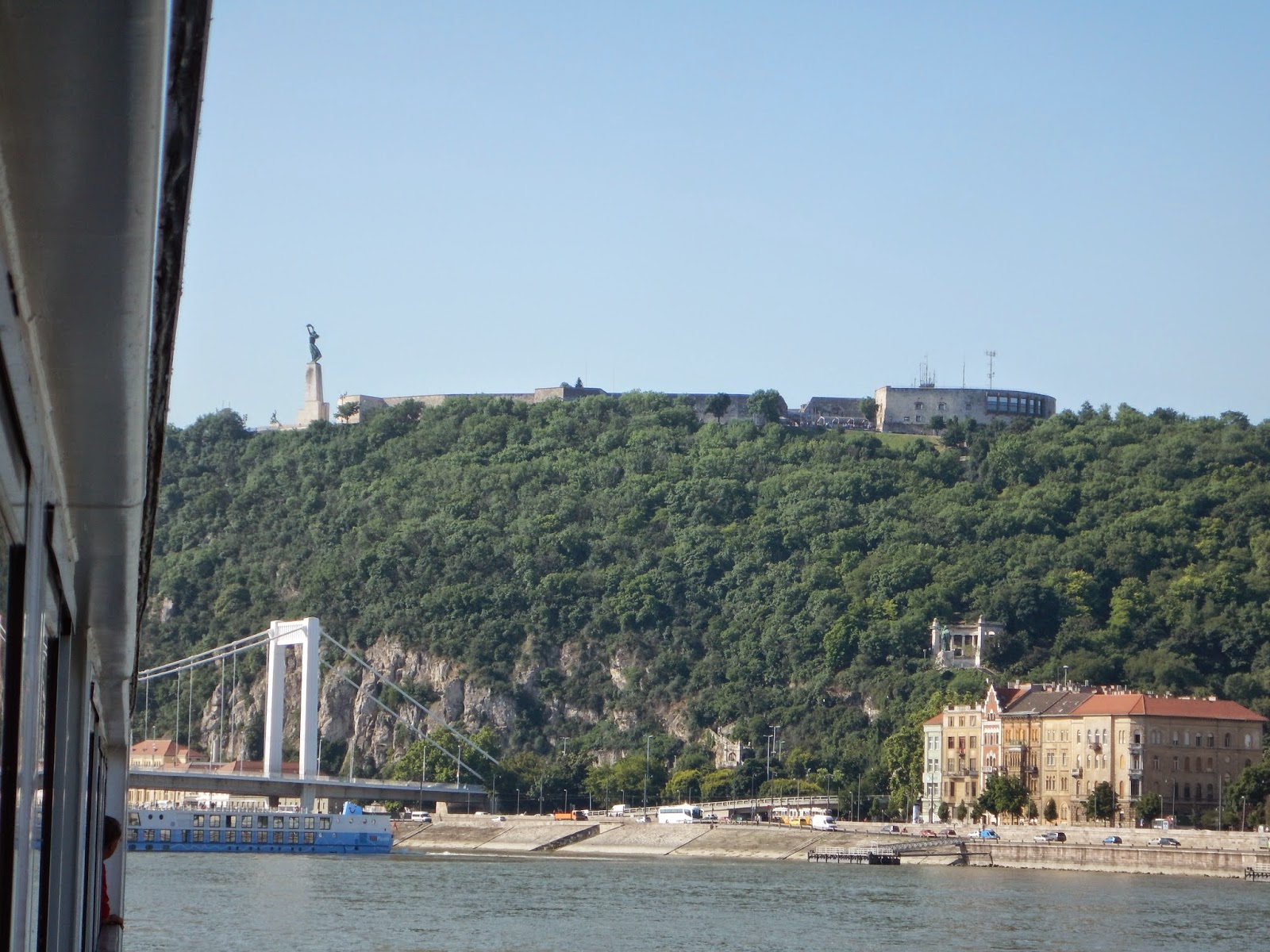I
think the very best way to enter Budapest is via the Danube River. We woke
early, the sunrise ahead of us by only about a half an hour. We came in by
boat, so we climbed to the top deck so as to view the city as we came in. The
first sight was that of a couple of kayakers on the river, sailing along in the
opposite direction. All was quiet except for the cacophony of birdsong from the
shore.
Budapest
(made up of two cities, Buda on one side of the Danube and Pest on the other), is
an extensive World Heritage Site, including amongst others the banks of the
Danube, the Buda Castle Quarter, Andrassy Avenue, Heroes’ Square, and the
Millennium Underground Railway, the second-oldest metro line in the world. It
has 80 geothermal springs, the world’s largest thermal cave system, the second
largest synagogue, and third largest Parliament building. As we sailed by the
Parliament building I couldn’t imagine that there could be any government
building larger – yet it is only the third largest! It consists of 691 rooms
and also houses the Hungarian Crown Jewels.
We
sailed in under the Szechenyi Bridge, also known as the Chain Bridge. It has
lovely sculptures underneath that you can only see from the water, and noble
stone lions at each end. According to
legend, the sculptor threw himself in the river when, during the bridge's
opening ceremony, a spectator proclaimed that the lions had no tongues. In
reality the lions do have tongues (they're just not easily visible) and the
sculptor lived on for several more decades. It makes for a good story though,
and Budapest has many.
As we
continued sailing we saw, up on a hill on the Buda side, what we thought to be
a giant eagle. It is actually an sculpture of a Tural bird, which is mythical
and believed to be a falcon. This bird is mythical in that it is part of the
story of how the Magyars settled the Hungarian homeland. The Tural appeared in
a dream to the wife of Ugyek, a Magyar leader. It told her that she would be
the founding mother of a new nations.
Beside
the sculpture of the Turel is the Budavari Siklo – the Budapest Castle Hill
Funicular. The funicular is a kind of cable car system that you kind of have to
know physics to understand how it works. A funicular is also know as an
inclined plane or cliff railway. The cables attach to tram-like cars on rails
and moves them up and down a steep slope horizontally. The ascending and
descending cars counterbalance each other. At least that’s how I understand it.
I did flunk high school physics, though. We never got to actually ride on the
thing, crowds were too large as it is a huge tourist draw.
Another
huge statue atop a very high hill is the Liberty (or Freedom statue). It is one of the few remaining relics of the
Communist era in Hungary. It was erected in remembrance of the Soviet
occupation of Hungary, which ended the occupation by Nazi Germany.
































No comments:
Post a Comment